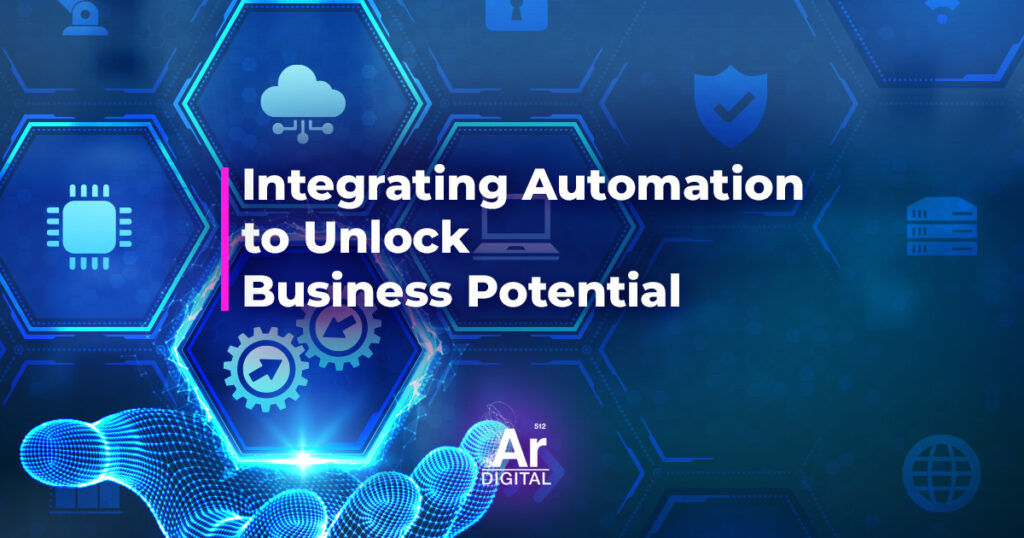Unlocking Business Potential through Automation Integration
In today’s rapidly evolving technological landscape, businesses are constantly seeking ways to improve operational efficiency, reduce errors, and ultimately increase revenue. One powerful solution that has gained immense popularity is automation integration. This approach involves connecting and harmonizing various legacy systems and software with the right Integration Platform as a Service (iPaaS) implementation. In this article, we’ll explore the benefits of automation integration and provide real-world scenarios to illustrate its impact.
Understanding Automation Integration
Automation integration is a strategic approach employed by businesses and organizations to enhance operational efficiency, reduce errors, and improve overall productivity by seamlessly connecting and harmonizing disparate software applications, systems, and processes within an integrated ecosystem. It is a critical component of digital transformation efforts and is often facilitated through the use of specialized technologies and platforms, with Integration Platform as a Service (iPaaS) solutions being a common choice.
Key Elements of Automation Integration
1. Connecting Disparate Systems:
At the heart of automation integration is the act of connecting and linking various software applications, systems, and data sources that traditionally operated in isolation. These systems can include legacy software, cloud-based applications, databases, IoT devices, and more. The goal is to create a unified, interconnected infrastructure where data and information flow seamlessly.
2. Automating Data Exchange:
Automation integration aims to automate the exchange of data between systems. Instead of relying on manual data entry and transfers, information is moved automatically, in real-time or on scheduled intervals, ensuring that data is always up-to-date and accurate. This not only saves time but also reduces the risk of human errors associated with manual data handling.
3. Standardizing Data Formats:
To facilitate effective communication between different systems, automation integration often involves standardizing data formats and protocols. This ensures that data can be easily understood and processed by all integrated components, regardless of their original design or purpose. For example, this could be used to streamline your medical coding and medical billing process. With that said, knowing the difference between medical coding and medical billing can help you develop a standardized format.
4. Orchestrating Workflows:
Automation integration goes beyond simple data exchange; it involves orchestrating complex workflows and business processes. For instance, when a customer places an order on an e-commerce website, automation integration can trigger a series of actions, including order processing, inventory management, and shipping, all seamlessly orchestrated across multiple systems.
The Power of Automation Integration
Streamlined Operations
Integrating legacy systems with modern software and cloud-based solutions can significantly streamline operations. Imagine a manufacturing company that relies on multiple disconnected systems for order processing, inventory management, and shipping. These siloed systems can lead to inefficiencies, delays, and costly errors. By implementing automation integration, these systems can communicate seamlessly, enabling real-time data exchange and reducing manual intervention. As a result, orders are processed faster, inventory levels are optimized, and shipments are dispatched with greater accuracy.
Error Reduction
Human errors can have costly consequences for businesses. Data entry mistakes, miscommunications, and inaccuracies in reporting can lead to financial losses and damage to the company’s reputation. Automation integration, or the integration of automation software in accounting, minimizes the risk of errors by automating data transfer between systems. For example, in a financial institution, integrating the customer relationship management (CRM) system with the accounting software ensures that client information is accurately reflected in financial records. This eliminates discrepancies and reduces the likelihood of compliance issues.
Increased Revenue
Efficiency gains achieved through automation integration can directly impact the bottom line. Consider an e-commerce retailer that integrates its online storefront with its inventory and shipping systems. When a customer places an order, the integration ensures that product availability is immediately updated, and the order is shipped promptly. This results in higher customer satisfaction, repeat business, and ultimately, increased revenue.
Competitive Advantage
Businesses that embrace automation integration gain a competitive edge. They can offer faster services, better customer experiences, and more accurate decision-making, all of which can lead to increased market share and revenue growth.
Use Cases for Automation Integration
Automation integration finds application in various industries and scenarios:
- E-commerce: Automating order processing, inventory management, and customer relationship management systems.
- Healthcare: Integrating electronic health records (EHR) systems with billing and insurance platforms.
- Manufacturing: Streamlining supply chain management, production planning, and quality control processes.
- Finance: Automating financial reporting, account reconciliation, and compliance procedures.
- Logistics: Enhancing route optimization, shipment tracking, and inventory control.
- Customer Service: Integrating CRM systems with call center software for improved customer support.
Real-World Applications
Scenario 1: E-commerce Order Fulfillment
In the world of e-commerce, order fulfillment is a critical process. Without automation integration, order details must be manually transferred from the website to the warehouse management system, increasing the risk of errors and delays. By integrating these systems, orders are processed automatically, reducing order-to-shipment times and improving customer satisfaction.
Scenario 2: Healthcare Records Management
In the healthcare industry, patient records must be accurate and accessible at all times. Automating the integration of electronic health record (EHR) systems with billing and insurance platforms (workflow automation in healthcare) ensures that patient information is consistent across all systems, reducing billing errors and speeding up insurance claims processing.
Scenario 3: Manufacturing Supply Chain
Manufacturers often deal with complex supply chains. Integrating production planning, inventory management, and supplier systems (workflow automation in manufacturing) can provide real-time visibility into the supply chain, enabling proactive decision-making and reducing production delays due to inventory shortages.
Automation Integration Empowers Organizations to Harness the Full Potential of Their Technology Ecosystem
Implementing automation through iPaaS solutions is a game-changer for businesses looking to optimize their operations, minimize errors, and increase revenue. The scenarios above illustrate just a few of the many ways automation integration can deliver tangible benefits. To harness the full potential of automation in your organization, consider partnering with an experienced implementer of iPaaS solutions like ArgonDigital.



